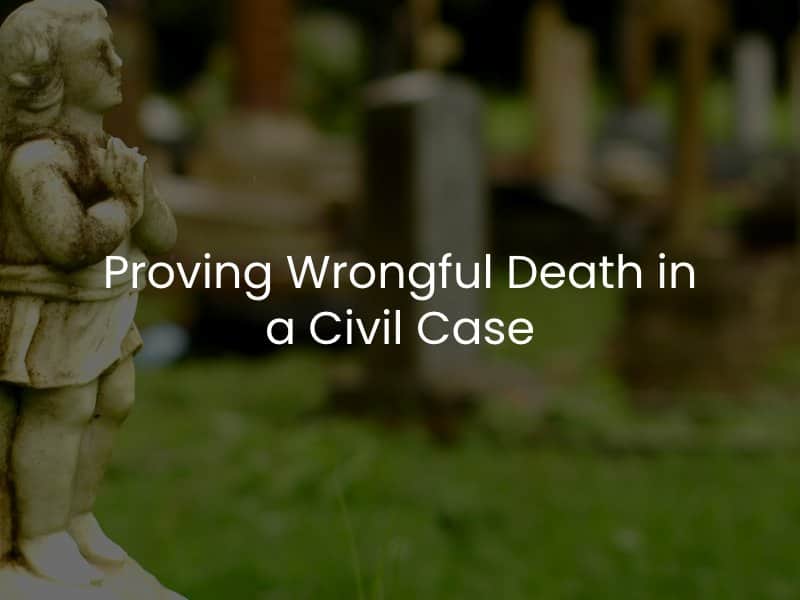Proving Wrongful Death in a Civil Case
Anytime a person loses their life due to the intentional or negligent actions of another individual or entity in California, the family members of the deceased may be able to file a civil wrongful death claim in court. This is separate from a criminal action that an individual may face for the death, which is the responsibility of state prosecutors, not family members. However, proving a wrongful death in a civil case can be challenging, and here our Sacramento wrongful death attorneys will review what is typically needed in order for these cases to be successful.

The Four Elements of Negligence Must be Present
There are four separate elements of negligence that must be present in order for a wrongful death claim to proceed forward and be successful.
Duty
It must first be shown that the deceased individual was owed a duty of care by the defendant (the person alleged to have caused the death). A duty of care will look different depending on the type of claim we are discussing. For example, if a person lost their life as a result of a slip and fall incident, the duty of care will revolve around the property owner and the deceased. If a person lost their life as a result of a vehicle accident, the claim will focus on the duty that the other driver owed others on the roadway.
Breach
After establishing that a duty of care was indeed present between the deceased and the defendant, it must be shown that the defendant breached their duty of care. Just like there are many ways to establish the duty of care depending on the circumstances, the breach of duty of care will look different depending on the type of case in question. For example, every driver on the roadway has a duty to operate their vehicle safely. A breach of duty could include operating at high rates of speed, operating while impaired by alcohol or drugs, failing to use a turn signal, etc.
Causation
After establishing that a breach of duty did occur, it will need to be shown that the breach actually led to the incident that caused the death of the deceased.
Damages
Finally, it will need to be established in court that there was some sort of monetary loss as a result of the breach of duty and the death. This can include a range of losses, such as funeral and burial expenses, medical bills, lost income the deceased would have provided, pain and suffering damages, loss of consortium damages, loss of inheritance, and more.
There Needs to be Evidence
When we examine these four elements of negligence, it is clear that there will need to be an extensive investigation into the incident. The evidence will need to show that not only was there a duty of care, but that the duty of care was clearly breached and that the person lost their life as a result of the breach.
There are various types of evidence that could be gathered, depending on the type of situation that led to the death. This can include photographs taken at the scene, video surveillance of the incident, statements from eyewitnesses who saw what happened, police reports, and more.